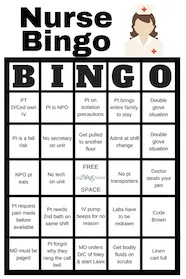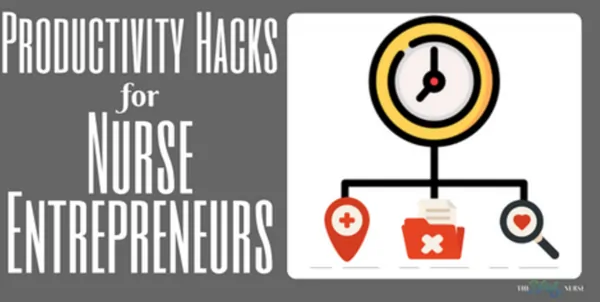If you are a future nursing student or an actual professional nurse, you need to know about the NANDA or North American Nursing Diagnosis Association, nursing diagnosis, NANDA nursing diagnosis list, NANDA approved nursing diagnosis, NANDA problem list, and other nursing terms. If you are an ordinary citizen that is curious about the credibility of the nurses in your hospital, you should know the basics of these terms.
What is NANDA, and what does it do?
First of all, NANDA should be defined first and what they do in the medical field. NANDA or North American Nursing Diagnosis Association is a recognized organization that manages the list of nursing diagnoses. It was initially formed in 1973 to arrange the list of nursing diagnoses by the first letter. NANDA was officially founded in 1982 and has published the NANDA-I Definitions and Classifications book or the NANDA-International, which exists to update terminology and promote unity within medical professionals continually.
Medical institutions always have a copy of the standardized NANDA nursing diagnosis list for each nursing station of hospitals. This will allow the nurse to have ease of access to what he or she needs to implement to the patient. The lists of diagnoses can be a part of the patient’s chart for the nurse’s convenience.
What is a nursing diagnosis, and what does it do?
A nursing diagnosis a judgment given by a medical professional based on how a patient responds to a certain health condition or life process or the effect of that response to an individual, family, or community. It is the basis for selecting the appropriate nursing intervention needed to achieve the best possible outcome with the nurse held accountable.
The functions of having a nursing diagnosis list are to help the nurse knows his or her priorities and do the appropriate nursing interventions based from it, help formulate the possible outcomes of quality assurance requirements, help identify how someone reacts to health processes and knowing their sources of strength that can be drawn to resolve problems, help provide a system of communication between the nursing professionals and health care professionals, provide a basis of evaluating whether the nursing care given to patients is efficient and finally, help nursing students to sharpen their problem-solving and critical-thinking skills.
The list of NANDA Nursing Diagnoses is applicable to a single person, a family, or a community. A set of possible nursing interventions is also listed to determine which appropriate intervention should be done to the patient based on the nursing diagnosis. The use of these standardized terms from the NANDA Nursing Diagnosis list is to allow the nursing staff to communicate easily with each other and avoid unnecessary details through long narratives to determine the proper nursing care the patient needs.
NANDA Nursing Diagnosis List
The NANDA nursing diagnosis list is generally categorized into four kinds of nursing diagnosis that is provided by the NANDA-International system. These are the problem-focused nursing diagnosis, risk nursing diagnosis, health promotion, nursing diagnosis, and syndrome nursing diagnosis.
Problem-focused nursing diagnosis or an actual diagnosis is a diagnosis made based on a problem that the patient is currently experiencing based on the nurse’s assessment. These kinds of diagnoses are only based on the present signs and symptoms that are showing. This type of nursing diagnosis has three parts: the nursing diagnosis, related factors, and defining characteristics.
The second type of nursing diagnosis is risk nursing diagnosis, where clinical judgment is needed since risk factors indicate that a problem will most likely develop. An individual is more likely to develop some problems based on a risk nursing diagnosis. The components of a risk diagnosis include diagnostic risk labels and risk factors. Some examples are Risk for Falls and Risk for Injury.
Wellness diagnosis or Health promotion diagnosis is a judgment about motivating a client’s desire to uplift his well-being. A one-part statement is what composes a wellness diagnosis.
The last type of nursing diagnosis is syndrome diagnosis. It is a clinical judgment based on a cluster of problems or risk nursing diagnoses that are expected to be present because of an event. Some examples include Chronic Pain syndrome and post-trauma syndrome.
Below are some of the NANDA nursing diagnosis examples and their corresponding definitions.
Activity Intolerance – which is the insufficient psychological energy to endure or complete required or desired daily activities.
Acute Confusion – It is the sudden effect of a group of changes and disturbances in attention, cognition, motor activity, level of consciousness, or the sleep/wake cycle.
Acute Pain – It is the sensory and emotional experience arising from actual or potential tissue damage or described in terms of such damage; sudden or slow onset of any intensity from mild to severe with an anticipated or predictable end and duration of fewer than six months.
Anxiety – is the vaguely uncomfortable sentiment of inconvenience or fear joined by an autonomic reaction.
Bowel Incontinence – is the change in typical bowel habits portrayed by the automatic entry of stool.
Caregiver Role Strain – It is the difficulty in performing a family caregiver job.
Chronic Confusion – Nursing diagnosis that is an irreversible, long-standing, as well as dynamic crumbling of mind and character portrayed by a diminished capacity to decipher ecological improvements, diminished limit with respect to scholarly points of view, and showed by unsettling influences of memory, direction, and conduct.
Chronic Pain – It is the diagnosis where the unpleasant tactile and passionate experience emerging from real or potential tissue harm or portrayed as far as such harm lasting for more than six months.
Constipation – The decrease in the typical occurrence of fecal matter joined by the troublesome or deficient entry of stool or potentially section of unreasonably hard, dry stool.
Decreased Cardiac Output – Diagnosis where the inadequate blood siphoned by the heart to satisfy the metabolic needs of the body.
Deficient Fluid Volume – It is the decreased intravascular, interstitial, and intracellular liquid. This pertains to dehydration and water loss without a change in sodium.
Deficient Knowledge – It is the absence of cognitive information involving a certain topic.
Diarrhea – It is a nursing diagnosis, which is characterized as the passage of loose and unformed stools.
Fatigue – A nursing diagnosis described as overwhelming sense of exhaustion and insufficient capacity for physical and mental work.
More NANDA Nursing Diagnosis Resources
NANDA International Nursing Diagnoses: Definitions & Classification, 2018-2020



Download Nurse Bingo Today!

Liven up any shift with a fun game of bingo. See who can fill a row first!
Fill a whole card and lose grip with reality.
Your privacy is protected. We will never spam you.










